As an inconspicuous car with an aerodynamic body, the Saab 96 was initially not associated with sports, but it later achieved great sporting success. In Sweden and other European countries, the Saab 96 V4 was a regular family car and had a functional wagon version known as the Saab 95. For several years, it was powered by a two-stroke engine, which was replaced by a four-stroke V4 from the Ford Taunus.
Table of Contents
Operation “Kajsa”
The Saab 96 made its debut in 1960. It was a successful development of the 92 and 93 models. It was produced with a two-stroke 750 cc engine and then 841 cc. The vehicle achieved numerous successes in sports. Despite its inconspicuous appearance, in the hands of drivers of the same class as Erik Carlsson, Simo Lampinen, Stig Blomquist or the legendary Pat Moss – Carlsson was a formidable weapon. Carlsson stood on the top podium of the prestigious Monte Carlo Rally (1962 and 1963), and triumphed in the Acropolis and San Remo rallies and dozens of other events around the world.
At that time, the Saab 96 was a car that customers were happy to buy not only in Sweden and Scandinavian countries, but also throughout Europe and on the very demanding American market. In the mid-1960s, ecology played an increasingly important role, and the two-stroke engines did not meet the increasingly stringent standards in the key American market. The West German Auto Union (Audi) withdrew from the production of two-stroke engines and Saab remained the only major producer of this type of engine in Western Europe. Already at the beginning of the decade, engineers from the Trollhattan company began working on adapting the 96 model to the transplant of a Ford four-stroke unit.
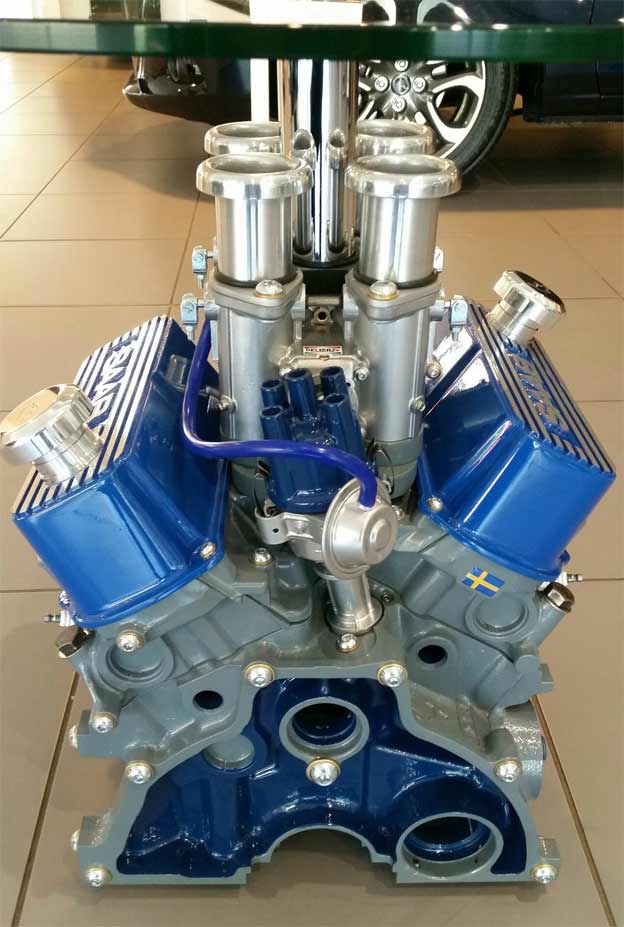
The Taunus 15M engine had four V-shaped cylinders, positioned in pairs at an angle of 60 degrees. Saab 96 body – the design of the famous Sixten Sasson has been modified by the team of Bjorn Envall. Introduced, among others wider grille. The V-4 transplant operation to the Saab 96 chassis was codenamed “Kajsa“. Good aerodynamics of the body and the 65 HP engine allowed it to reach a speed of 155 km/h. However, the manufacturer recommended a steady cruising speed of 140 km/h.
Innovations – Evolution Over the Years
In 14 years of production, the Saab 96 V4 has evolved. The Swedes slowly but surely made numerous changes to each model year, adapting it to the needs of individual markets. Production of the Saab 96 V4 began on August 2, 1966 in Trolhattan. Three years later, assembly started at Saab’s Scania Valmet OY plant in Uusikaupunki (Finland). In addition to the 96 model, production of the Saab 95 with a five- or seven-seater station wagon was continued.

The first modernization of the front part of the vehicle body took place in 1969. The round headlights have been replaced by flat oblong ones. From the beginning of the 1970s, the Saab 96 for the Swedish market was equipped with headlamp wipers as standard. In other markets it was an optional extra. Another novelty, unheard of then even in luxury limousines, was the electrically heated driver’s seat. From August 1972, halogen headlamps were installed on selected markets. In the years 1971 – 74, the Saab 96 with a 1.7 / 70 HP engine, derived from the Ford Taunus 17M, was exported exclusively to the US and Canadian markets. In 1973, a two-part plastic dummy was introduced.
Safety first
Safety has always been a top priority for Saab designers. In the mid-1970s, the 96 model had front and rear seat belts. The cockpit is covered with soft plastic and all sharp edges have been eliminated. Hundreds of hours have been devoted to designing secure locks and door handles that will function even in the event of damage and deformation to the bodywork.

In the following years, the list of equipment was expanded with new items. New shades of varnish and upholstery patterns meant that the age-old structure remained attractive for buyers for a long time. In April 1975, a limited series of Saab 96 V4 Silver Jubilee (Saab 96 V4 “Jubileum”) was presented on the occasion of the 25th anniversary of the start of series production of the 92 model. From the fall of 1975, all Saabs 96 and 95 had wide plastic bumpers that could withstand collisions at speeds of up to 8 km / h. At that time (model year 76 ‘) daytime running lights were fitted as standard in versions offered in Sweden and Finland.
End of production
A year later, the Saab 96 had seats with headrests, derived from the model 99. On February 23, 1978, the production of the Saab 95 was discontinued. In 19 years, 110,527 units of the family station wagon were produced. In 1979, production of the Model 96 continued exclusively at Uusikaupunki. At the turn of 1979/80, a farewell series of 300 copies was assembled.
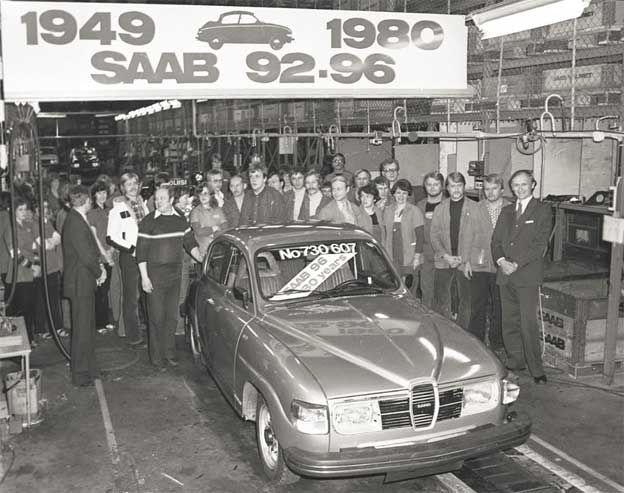
They were available only in Aquamarine Blue metallic paint, with elegant gray blue velor upholstery and aluminum Minilite rims. On January 8, 1980, the last Saab 96 rolled off the Saab-Valmet assembly line. Master Erik Carlsson personally drove it to the company’s museum in Trollhattan.
Saab 96 Sporting Successes
The great Saab rally legacy of the 1950s and 1960s also owed drivers of the younger generation, Erik Carlsson’s successors. The many successes of the 96 V4 are often forgotten, limiting Saab’s role in sports to two-stroke models. All the more so, it is worth recalling the most important achievements on the rally routes.
Already in the 1967 season, Saab 96 V4 driver Simo Lampinen won the title of Finnish rally champion. In the same year, Erik Carlsson won the Vltava Rally in Czechoslovakia. At the same event, the women’s Pat Moss / Elizabeth Nystrom crew took fourth place. In 1968, the Finnish-British Lampinen / Davenport crew proved to be unbeatable on the route of the 17th RAC rally. In 1969 and 1970 Carlsson competed in the Mexican Baja 1000 Rally, where he won third and fifth places, respectively.
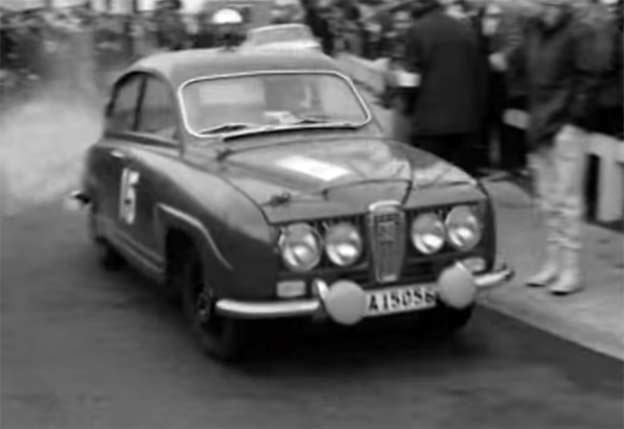
Once again, the inconspicuous Saab 96 V4 turned out to be a fast car that was able to compete with the Alpine Renault A 110 or Lancia Fulvia. In 1974, Blomquist, piloted by Hans Sylvab, was second in the Arctic Rally and in the British RAC. Between 1971 and 76, Blomquist won five Swedish rally championships.
In the 1975 season, Simo Lampinen won the title of another Finnish rally champion. In August this year, the Lampinen / Markkanen crew took second place in the 1000 Lakes Rally. From 1976, the Saab 96 V4 was replaced by the rally version of the Saab 99. Occasionally, cars belonging to less awarded crews competed in the 1979 rally season.

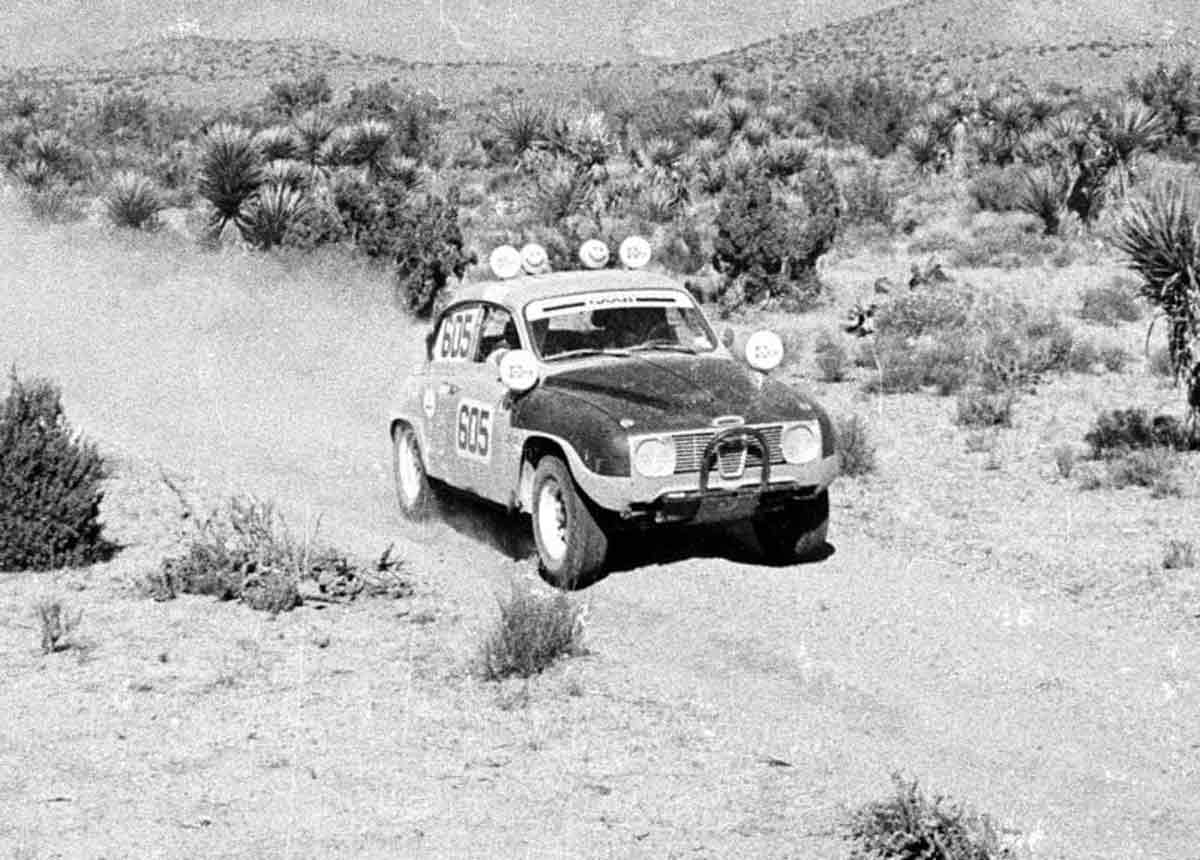







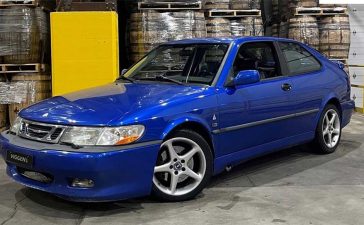
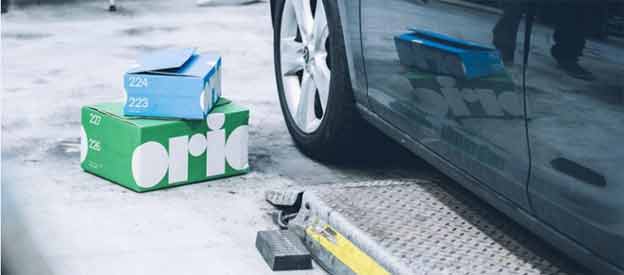

So much omissions and half truths it is disrespectful..Omission and error: “In 1976 Saab moved over to the 99” well not really 100%..Per Eklund from Arvika beat Stig Blomqvist in the 1976 World Championship round in Sweden held 20 February to 22 February>>
1. #4 flag flag Eklund Per – Cederberg Björn icon Saab 96 V4
Saab Scania 4/3 8:08:26
(29306) 88.7
2. #2 flag flag Blomqvist Stig – Sylvan Hans icon Saab 96 V4
Saab Scania
tyre 4/3 8:10:02
(29402) +1:36
+1:36 88.4
0.13
3. #7 flag flag Kulläng Anders – Andersson Claes-Göran icon Opel Ascona
Opel Team Sweden
tyre 4/3 8:31:10
(30670) +22:44
+21:08 84.7
1.89
First 99 was over 50 minutes behind.
And the omission in all the years talk of Baja failing to mention that Saab s driven by whoever may have won —->their class<<<----- but that is hardly by a long shot true to say Saab "won Baja".... Here's the winners in cars and motocycles in the time period in question: 1968 Ensenada-La Paz United States Larry Minor United States Jack Bayer >>Ford Bronco 21:11:32 United States
Larry Berquist
United States Gary Preston Honda
305cc CL77 Scrambler
20:38:28
1969 Ensenada-La Paz United States Larry Minor
United States Rod Hall >>Ford Bronco 20:48:10 Sweden Gunnar Nilsson
United States J.N. Roberts Husqvarna
500 TWIN
21:35:52
1970 Ensenada-La Paz United States Drino Miller
United States Vic Wilson Miller >>>VW 16:07 United States Mike Patrick
United States Phil Bowers Yamaha
RT1 360
18:31
1971 Ensenada-La Paz United States Parnelli Jones
United States Bill Stroppe >>>Ford Bronco 14:59 United States Malcolm Smith
Sweden Gunnar Nilsson Husqvarna
400 Cross
16:51
As a long term racer this type of claim of “winning” an event when in reality somebody only won their class–and may in fact have been literally HOURS behind the real winner of the event as is the case with “Class 6 (standard 2wd production sedan) has always been annoying and shameful.. It is dishonest and was and as we see here is rampant and at best a half truth. The ‘fake news” aspect was so bad that the world sanction body for automobile motorsport, the FIA eventually mandated that “entrants” (like the factory or team in Internationally listed events) that this type of BS stop and that advertisements MUST include the car’s class on the ads…I have seen in adverts “Simca wins WRC Finland” when the car was in 1000cc class and a couple of hours AFTER the winner..
Maybe we should stop with half-truths and “alt-facts”??? These things hurt credibility.
When you get to the part mentioning Erik Carlson and the Mexican 1000 the author fails to mention that Culver City, California SAAB dealer Ingvar Lindqvist was the victor 3 years in a row. ( 1968-69-70 ) A feat that bares mentioning! I mean how often did anyone beat Carlson in a SAAB not once but twice in a row! The car pictured above was one of three cars that SAAB sent over. Bill Carpenter scored the 1976 SCORE Class 6 championship in it. It has resided in my shop for the last 40 years.
To the saabplanet.com owner, Thanks for the post!